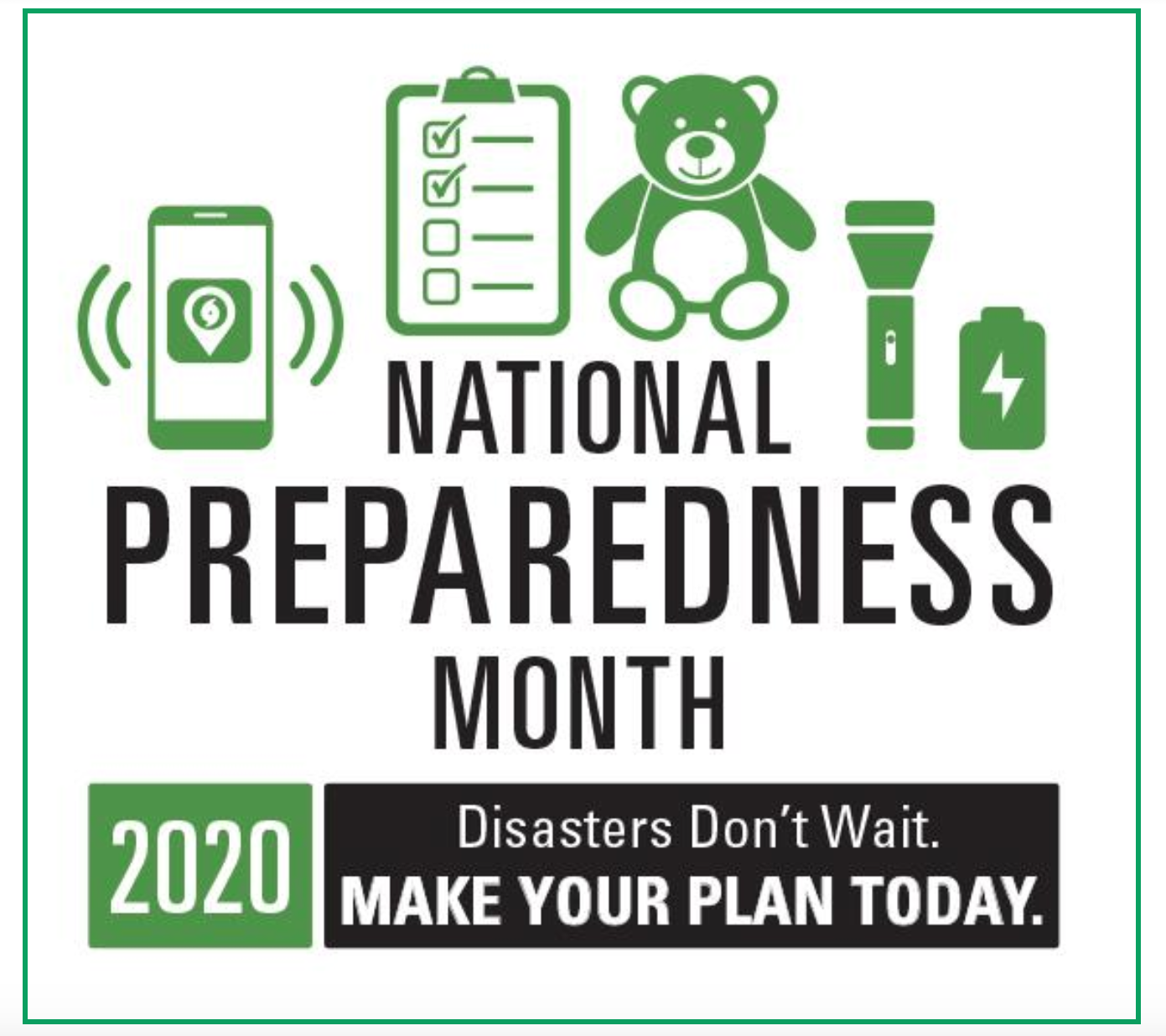Teaching Maryland Youth About Preparedness
 September is National Preparedness Month, and during the week of September 20 – 26 we focus on “Teaching Youth About Preparedness.”
September is National Preparedness Month, and during the week of September 20 – 26 we focus on “Teaching Youth About Preparedness.”
Often, when family discussions turn to disasters and emergencies, our minds wander to what we’ve recently seen online or on television: breaking news coverage of events that devastate entire communities, states, or even nations. While, yes, events like hurricanes, tornadoes, wildfires, pandemics, winter storms, and earthquakes are all important to prepare for – especially since they can all happen right here in Maryland – we must also prepare ourselves and our children for disasters that are relatively small in physical scale but huge for those impacted. For instance, a single house fire can be a disaster for a family.
Preparing for an emergency requires time, research, reflection, and refinement. New challenges arise when adding into the mix preparing for an emergency during a time of virtual learning. While this may feel like a daunting task for parents and guardians, engaging in such planning is actually far easier and more effective if we do it regularly. Think of emergency planning like running or lifting weights; they’re harder to accomplish when we do them infrequently. As we engage in these activities more often, we learn more about our strengths and weaknesses and how to improve and grow.
With that in mind, make it a priority to update your family’s emergency plans every season (at minimum) in order to take into account changing natural or human-sparked events both within and beyond our control.
As caregivers, we have to think about the types of emergencies we, our families, our places of business and/or worship, and our homes may experience. We have to consider what we would do in an emergency (evacuate or shelter-in-place), how and where we would go (evacuation routes, transportation methods, and destination selection), what we need to take with us (supplies, medicine, face coverings, equipment), who we may need to provide special care for (elderly, children, those with access and functional needs, pets), and how and with who we will communicate throughout the emergency. Our plans even need to include how we would do all of these things if we were without resources like power, fuel, food, water, and wireless service.
The good news is that we don’t have to start preparing on our own. There are many fantastic resources available to get your family started on the road to preparedness.
Ready.gov is a great place to start. Here you can find information about how to prepare for, respond to, and recover from disasters. The website provides information, resources, and examples to help you:
- know your threats/hazards;
- make a plan;
- build a kit;
- learn safety skills; and
- practice, practice, practice.
At school, our children practice emergency drills regularly. Schools conduct various school safety drills to prepare students, teachers, staff members, and the entire school community for various types of incidents.
At home, we check our children’s car seat and seat belt, make sure that they wear their helmet, keep them warm and dry in bad weather, and teach them about what to be extra aware around (stoves, outlets, fireplaces, candles, strangers, the internet). We also check our home smoke detectors regularly (no less than twice a year).
Unfortunately, with work, school, extracurricular activities, virtual learning, and what seems like a never-ending list of responsibilities on our to-do lists, preparing children for disasters at home is often the last thing on anybody’s mind. Many parents and guardians hope that if an emergency hits, their protective instincts will kick in and they will be strong enough to protect their children from any and all negative outcomes. Too often, disasters show us that adrenaline-fueled courage or heroics are not enough. If we make preparedness a priority and find ways to make it fun (maybe even cool and exciting for our teen and tween family members), we can help our children be ready to face an emergency we hope will never come.
Ready Kids: Emergencies and disasters can be scary, but there are ways to help you stay safe before, during, and even after a disaster.
Ready.gov Kids provides resources for parents, guardians, and educators on how to prepare our youth for disasters. They have many excellent resources for all ages including games for the younger ones like “Disaster Master” and resources for teens who want to be preparedness leaders in their communities.
Begin preparing your children today to be ready for almost anything. Emergency planning at home can help improve every child’s preparedness and problem-solving skills, build their resilience, and maybe (hopefully) develop our next generation of Emergency Managers.
Kate Bryan Hession is a mom, safety advocate, emergency manager, and the Executive Director of the Maryland Center for School Safety (MCSS).
